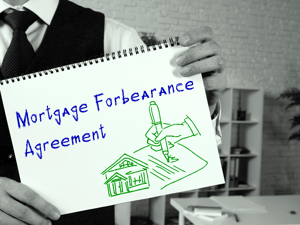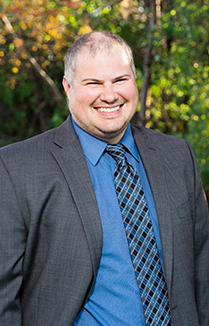 Due to the ongoing COVID-19 pandemic, many mortgage lenders have allowed homeowners to take advantage of putting their mortgage payments into forbearance for varying amounts of time, and hundreds of thousands of individuals have taken advantage of these programs. With respect to these forbearance plans, the most common question that clients and potential clients are asking is: What happens when the forbearance period ends?
Due to the ongoing COVID-19 pandemic, many mortgage lenders have allowed homeowners to take advantage of putting their mortgage payments into forbearance for varying amounts of time, and hundreds of thousands of individuals have taken advantage of these programs. With respect to these forbearance plans, the most common question that clients and potential clients are asking is: What happens when the forbearance period ends?
Unfortunately, as with almost everything these days, there is not a clear, concise answer to this question. However, we have included some of the different ways that mortgage lenders are treating the payments that accrue during the forbearance period and what they are doing to help facilitate repayment.
No Help At All
For some lenders, the default is to offer no help at all, but instead call the amount due once the forbearance period ends. In this case, if your mortgage payments are $2000/month and you missed six months of payments, the lender would be asking for over $12,000 when the forbearance ends. Though it may have helped to miss the payments over the past six months, asking for them to be paid all at once certainly is not going to help anyone. However, usually this default request is followed by an offer to apply for one of the following options.
Structured Repayment Plan
Some lenders offer a structured repayment plan of varying lengths (typically a 6-month plan) whereby you can resume making your regular monthly payments, but also make an additional, agreed upon payment until such time that the forbearance amount is repaid.
Loan Modification
If a homeowner qualifies, some lenders are willing to roll the missed payments to the back end of the loan, thereby catching up the loan, but also increasing the amount of remaining payments. This option is likely the most attractive to anyone that has taken advantage of the forbearance program, but from my experience, not all homeowners apply as it requires a cumbersome application process, and the lenders typically will require trial payments to make sure the homeowner can afford the payments—this can be difficult if the homeowner is still unemployed or underemployed due to COVID-19.
Creating a Separate Loan
Another treatment of the forbearance amount that we have come across is a process through which the lender creates a separate, secured loan (basically a second mortgage) that either does, or does not, require its own payments in addition to the regular payments on the first mortgage.
How Do I Know What I Would Qualify For?
As mentioned above, this is an overview of what we have come across, but it is not an all-inclusive list, and your mortgage company may have other options that it can discuss with you. So the best advice that we can provide is that you contact your lender to discuss the available options.
What If My Lender Will Not Help?
That is where we come in! If your lender is unwilling or unable to help, or just plain uncooperative as a whole, we can help with a Chapter 13 Bankruptcy, or if you are already in a Chapter 13 Bankruptcy, we may be able to help in that case as well. Typically, if a homeowner has fallen behind on payments, but can now afford to make the monthly payments, we can use a Chapter 13 Bankruptcy filing to help the homeowner catch up on the payments.
CALL NOW FOR A FREE STRATEGY SESSION FROM A MN BANKRUPTCY LAWYER AT KAIN & SCOTT
If you find yourself in the difficult position of not being able to make your monthly mortgage payments, reach out to Minnesota’s LARGEST bankruptcy law firm to set up a free consultation at www.kainscott.com, or give us a call at 612-843-0529. You will be glad you did!


